Glucagon-like peptide-1 and glucose-dependent insulinotropic polypeptide agonists for the treatment of obesity and diabetes mellitus
Pharmaceutical interventions play a vital role in managing various conditions, including weight-related issues such as obesity. In this context, lifestyle changes are often challenging to maintain,
[...] Read more.
Pharmaceutical interventions play a vital role in managing various conditions, including weight-related issues such as obesity. In this context, lifestyle changes are often challenging to maintain, especially for individuals struggling with this condition. Obesity is strongly linked to serious health conditions like cardiovascular disease and insulin resistance, leading to a cascade of health risks. Importantly, the development of effective and safe weight loss medications has been challenging. Diabetes mellitus (DM), the incidence of which is also rising, is closely related to obesity. The annual rate of DM cases has increased significantly, mirroring trends in obesity. Pharmaceutical companies have made significant progress in developing drugs that address both diabetes and obesity. Glucagon-like peptide-1 receptor agonists (GLP-1RAs) have emerged as a promising class of medications with dual benefits in managing diabetes and aiding weight loss such as semaglutide, liraglutide, dulaglutide, exenatide, among others. However, despite their effectiveness, they can be expensive. The availability of various GLP-1RAs offers flexibility in diabetes management, but the surge in their prescription has led to a global shortage. Health authorities are working to address this issue, while pharmaceutical companies are exploring new paths to improve the quality of these drugs. In this context, tirzepatide stands out as a medication targeting key hormones involved in obesity and DM. Another potential breakthrough, retatrutide, is also being developed for these two conditions, but it requires further research. In this paper, the authors address all the GLP-1RA options developed to date, covering their mechanisms of action, efficacy, and chemical structures, among other aspects.
Alexander C. Martins ... Fernando Albericio
Pharmaceutical interventions play a vital role in managing various conditions, including weight-related issues such as obesity. In this context, lifestyle changes are often challenging to maintain, especially for individuals struggling with this condition. Obesity is strongly linked to serious health conditions like cardiovascular disease and insulin resistance, leading to a cascade of health risks. Importantly, the development of effective and safe weight loss medications has been challenging. Diabetes mellitus (DM), the incidence of which is also rising, is closely related to obesity. The annual rate of DM cases has increased significantly, mirroring trends in obesity. Pharmaceutical companies have made significant progress in developing drugs that address both diabetes and obesity. Glucagon-like peptide-1 receptor agonists (GLP-1RAs) have emerged as a promising class of medications with dual benefits in managing diabetes and aiding weight loss such as semaglutide, liraglutide, dulaglutide, exenatide, among others. However, despite their effectiveness, they can be expensive. The availability of various GLP-1RAs offers flexibility in diabetes management, but the surge in their prescription has led to a global shortage. Health authorities are working to address this issue, while pharmaceutical companies are exploring new paths to improve the quality of these drugs. In this context, tirzepatide stands out as a medication targeting key hormones involved in obesity and DM. Another potential breakthrough, retatrutide, is also being developed for these two conditions, but it requires further research. In this paper, the authors address all the GLP-1RA options developed to date, covering their mechanisms of action, efficacy, and chemical structures, among other aspects.
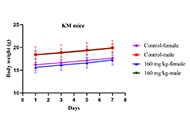 Subacute toxicity of isoliquiritigenin-zein phosphatidylcholine nanoparticles on biochemical, hematological, and histopathological parameters in Sprague-Dawley ratsOpen AccessOriginal ArticleAim: Isoliquiritigenin (ISL) is a natural flavonoid found in many natural plants, which exhibits numerous pharmacological properties including anti-inflammatory, antioxidant, antitumor, and antiv [...] Read more.Ke Yang ... Jianping ChenPublished: April 29, 2024 Explor Drug Sci. 2024;2:234–253
Subacute toxicity of isoliquiritigenin-zein phosphatidylcholine nanoparticles on biochemical, hematological, and histopathological parameters in Sprague-Dawley ratsOpen AccessOriginal ArticleAim: Isoliquiritigenin (ISL) is a natural flavonoid found in many natural plants, which exhibits numerous pharmacological properties including anti-inflammatory, antioxidant, antitumor, and antiv [...] Read more.Ke Yang ... Jianping ChenPublished: April 29, 2024 Explor Drug Sci. 2024;2:234–253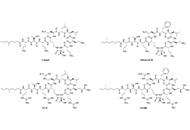 Lipopeptide adjuvants for antibiotics and vaccines: the future step in the fight against multidrug-resistant and extensively drug-resistant pathogensOpen AccessReviewWith the surge of antibiotic resistance in bacteria, the need for a larger arsenal of effective antibiotics and vaccines has drastically increased in the past decades. Antibiotics like vaccines can [...] Read more.Chloé O. Sebilleau, Steven J. SucheckPublished: April 29, 2024 Explor Drug Sci. 2024;2:203–233
Lipopeptide adjuvants for antibiotics and vaccines: the future step in the fight against multidrug-resistant and extensively drug-resistant pathogensOpen AccessReviewWith the surge of antibiotic resistance in bacteria, the need for a larger arsenal of effective antibiotics and vaccines has drastically increased in the past decades. Antibiotics like vaccines can [...] Read more.Chloé O. Sebilleau, Steven J. SucheckPublished: April 29, 2024 Explor Drug Sci. 2024;2:203–233 Daropeptide natural productsOpen AccessPerspectiveCyclophane-containing peptides comprise an important group of macrocyclic peptides with unique structural properties and pharmaceutical relevance. Darobactin A is a ribosomally synthesized and post- [...] Read more.Suze Ma ... Qi ZhangPublished: April 19, 2024 Explor Drug Sci. 2024;2:190–202
Daropeptide natural productsOpen AccessPerspectiveCyclophane-containing peptides comprise an important group of macrocyclic peptides with unique structural properties and pharmaceutical relevance. Darobactin A is a ribosomally synthesized and post- [...] Read more.Suze Ma ... Qi ZhangPublished: April 19, 2024 Explor Drug Sci. 2024;2:190–202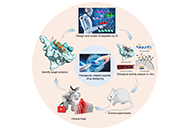 Stapled peptides: targeting protein-protein interactions in drug developmentOpen AccessReviewProtein-protein interactions (PPIs) impersonate a significant role in many biological processes and are potential therapeutic targets in numerous human diseases. Stapled peptides, as the most promis [...] Read more.Qian Zhang ... Chunqiu ZhangPublished: April 18, 2024 Explor Drug Sci. 2024;2:154–189
Stapled peptides: targeting protein-protein interactions in drug developmentOpen AccessReviewProtein-protein interactions (PPIs) impersonate a significant role in many biological processes and are potential therapeutic targets in numerous human diseases. Stapled peptides, as the most promis [...] Read more.Qian Zhang ... Chunqiu ZhangPublished: April 18, 2024 Explor Drug Sci. 2024;2:154–189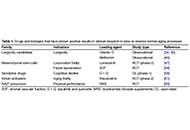 Clinical studies with drugs and biologics aimed at slowing or reversing normal aging processes—emerging results and future perspectivesOpen AccessPerspectiveFive families of investigational products are in clinical investigation to slow or reverse normal aging processes [longevity candidates, mesenchymal stem cells, senolytics drugs, sirtuin activators, [...] Read more.Ricardo P. GarayPublished: April 10, 2024 Explor Drug Sci. 2024;2:144–153
Clinical studies with drugs and biologics aimed at slowing or reversing normal aging processes—emerging results and future perspectivesOpen AccessPerspectiveFive families of investigational products are in clinical investigation to slow or reverse normal aging processes [longevity candidates, mesenchymal stem cells, senolytics drugs, sirtuin activators, [...] Read more.Ricardo P. GarayPublished: April 10, 2024 Explor Drug Sci. 2024;2:144–153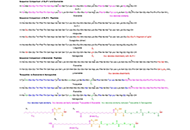 Glucagon-like peptide-1 and glucose-dependent insulinotropic polypeptide agonists for the treatment of obesity and diabetes mellitusOpen AccessReviewPharmaceutical interventions play a vital role in managing various conditions, including weight-related issues such as obesity. In this context, lifestyle changes are often challenging to maintain, [...] Read more.Alexander C. Martins ... Fernando AlbericioPublished: April 03, 2024 Explor Drug Sci. 2024;2:126–143
Glucagon-like peptide-1 and glucose-dependent insulinotropic polypeptide agonists for the treatment of obesity and diabetes mellitusOpen AccessReviewPharmaceutical interventions play a vital role in managing various conditions, including weight-related issues such as obesity. In this context, lifestyle changes are often challenging to maintain, [...] Read more.Alexander C. Martins ... Fernando AlbericioPublished: April 03, 2024 Explor Drug Sci. 2024;2:126–143